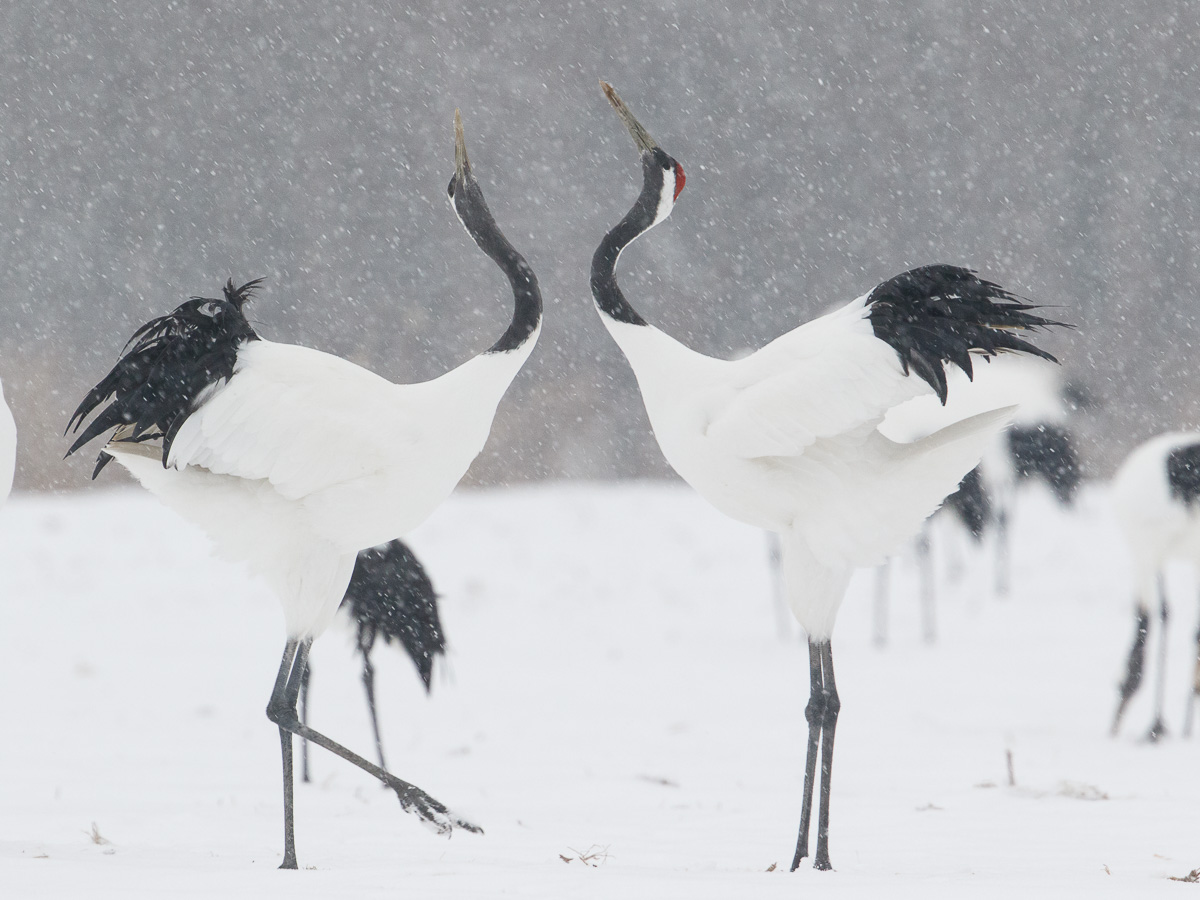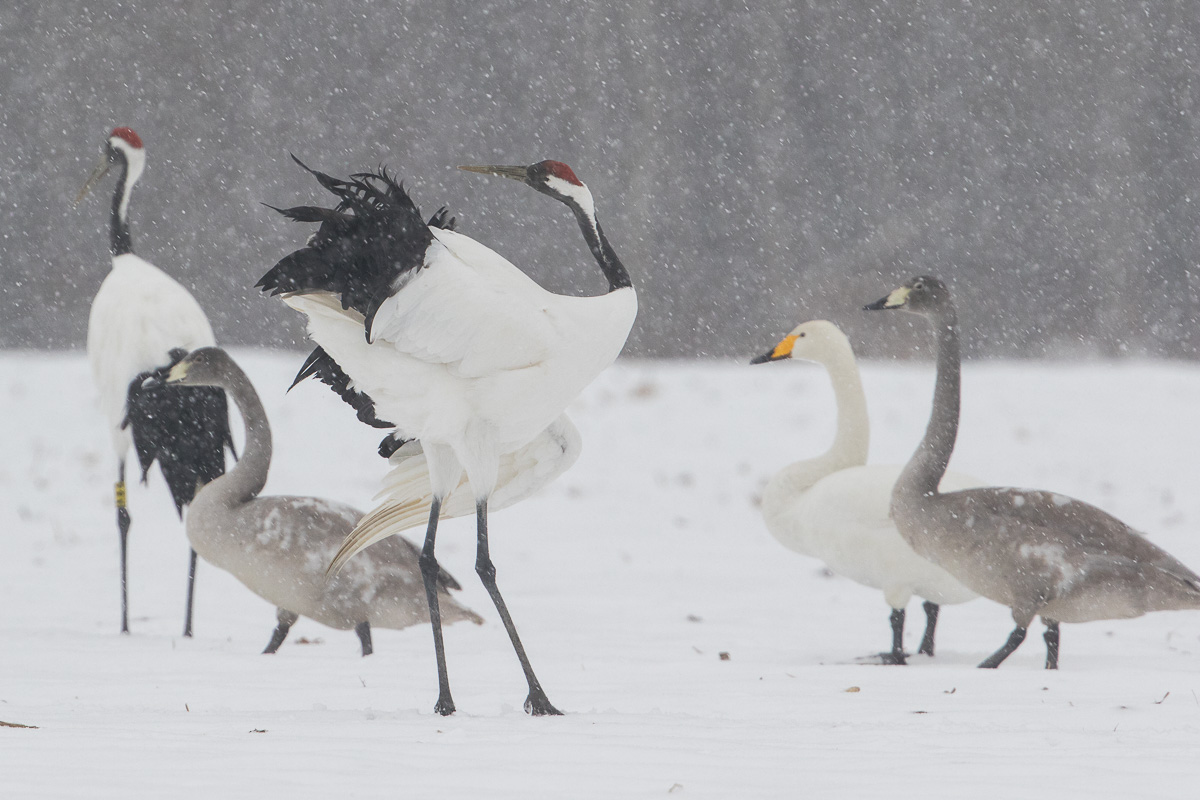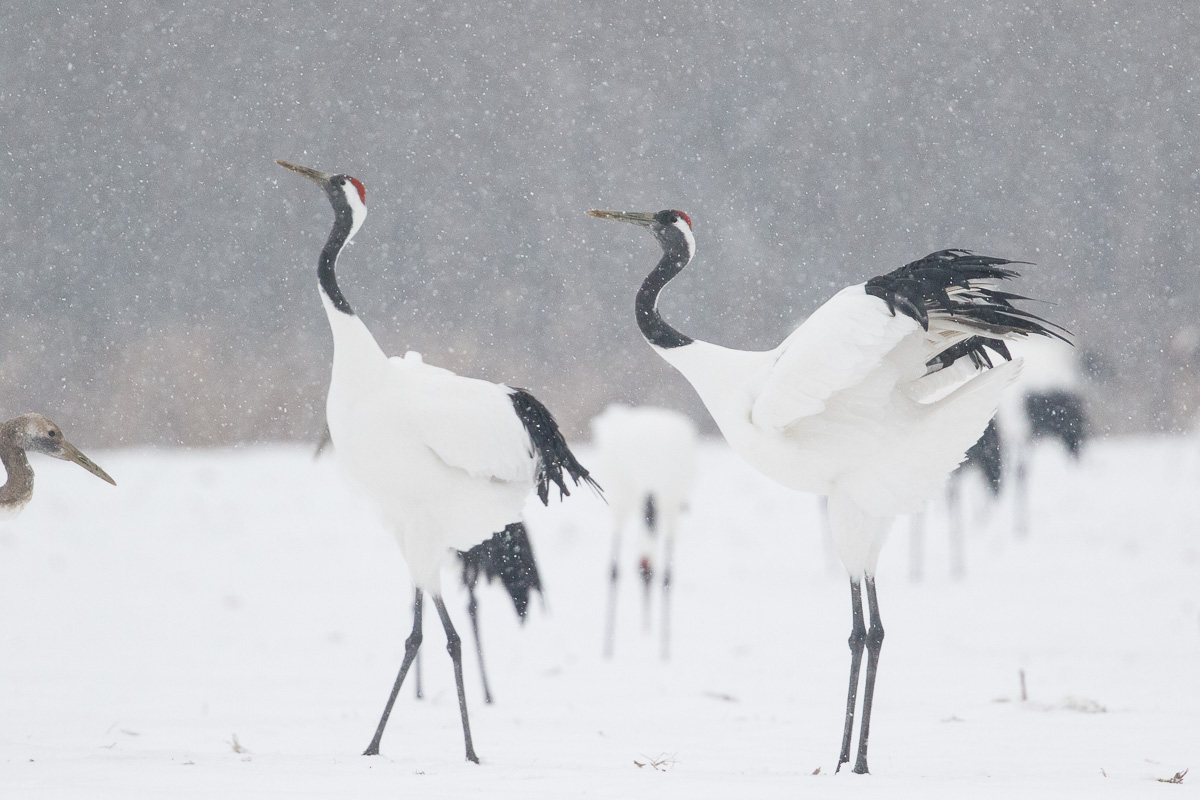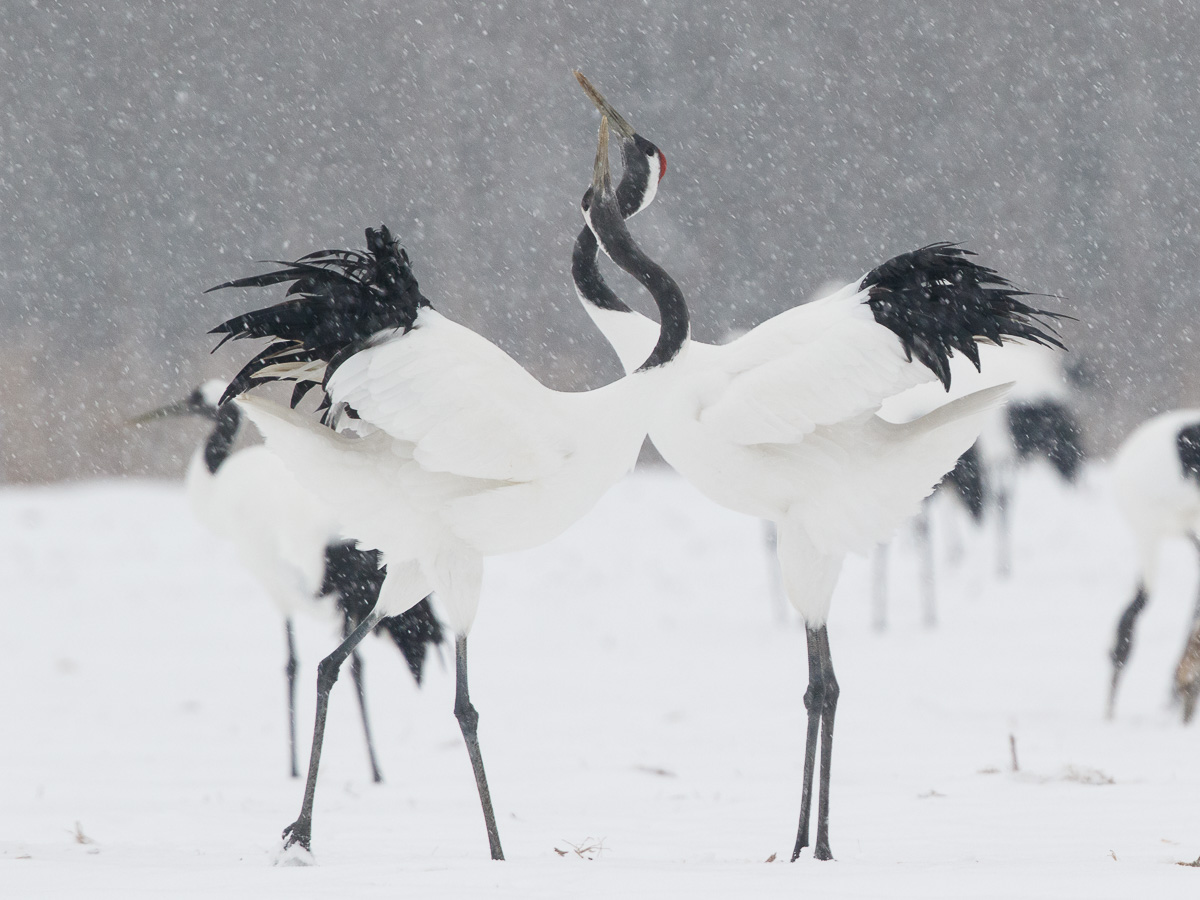The Red-crowned Crane (Grus japonensis) is an endangered crane species that is found in northern Asia. One of the places where it can be more easily seen is in Hokkaido, Japan where they are a resident species, unlike the migratory ones elsewhere. In Japan, they are called tanchōzuru or shortened tanchō (red-head). They are considered sacred and seen as a symbol of fidelity, love and longevity. But they were on the brink of extinction due to hunting, mainly for their plumage.
Although hunting them is a thing of the past and conservation work is ongoing, currently there are only around 2,750 birds left in the wild, including about 1,000 birds in Hokkaido. In fact in 1926, there were only about 20 birds left in Hokkaido, but urgent conservation work increased their numbers substantially. One of the measures they did was to set up feeding grounds for the cranes during wintertime.
At the end of 2014, I brought my family to Hokkaido for a vacation. It was not a birding trip, but since my wife arranged for one where we had an opportunity to see the Red-crowned Cranes feeding, I brought along my long lens for the trip. Arriving on a cold and snowy day, I was delighted to see so many of these cranes at the feeding site next to Akan International Crane Centre at Kushiro.
Although snowing and frankly having too long a lens, I managed to take some photos of the cranes and even a sequence of their famous courtship ritual.
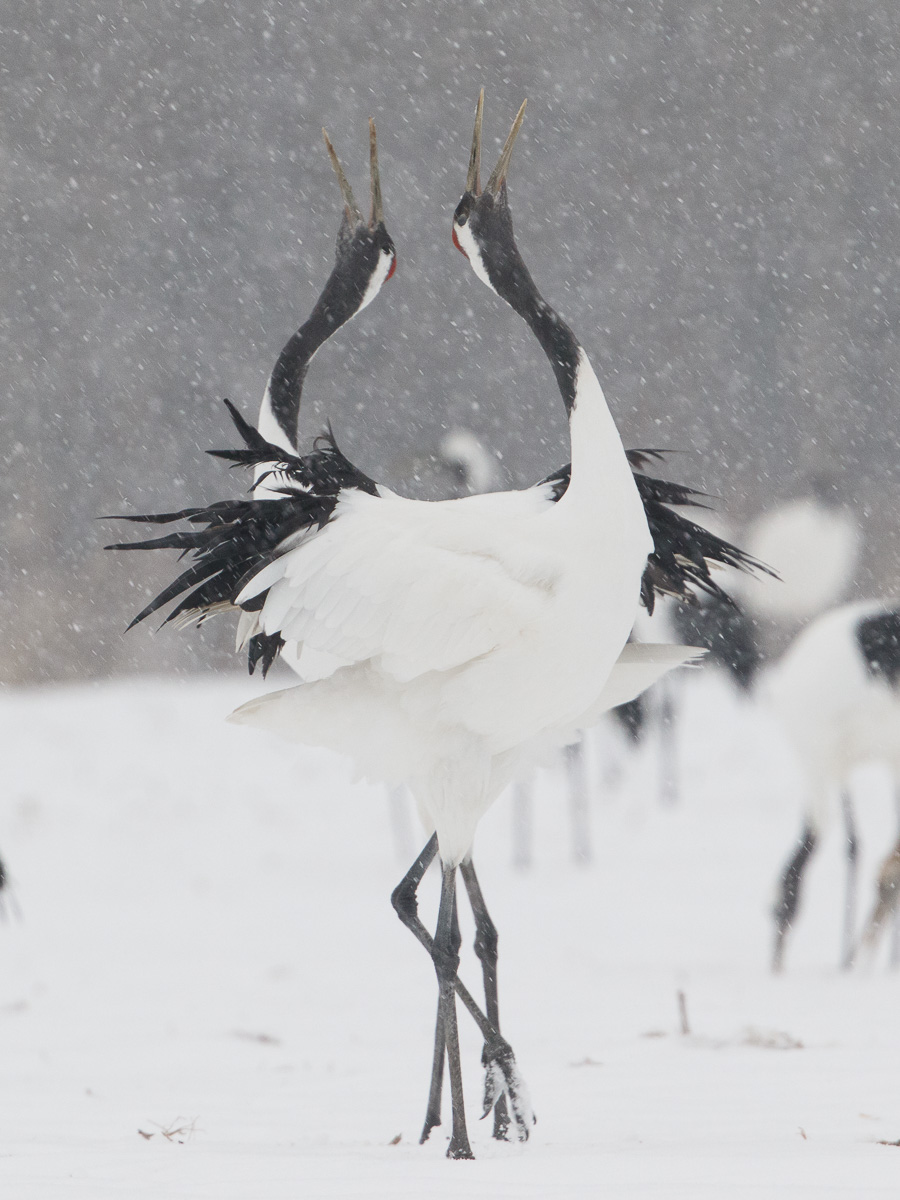
They are now considered ‘one’. This would have been a great shot, if only there were no other cranes in the frame. But it is a busy feeding lot and I did not have time for a re-do.
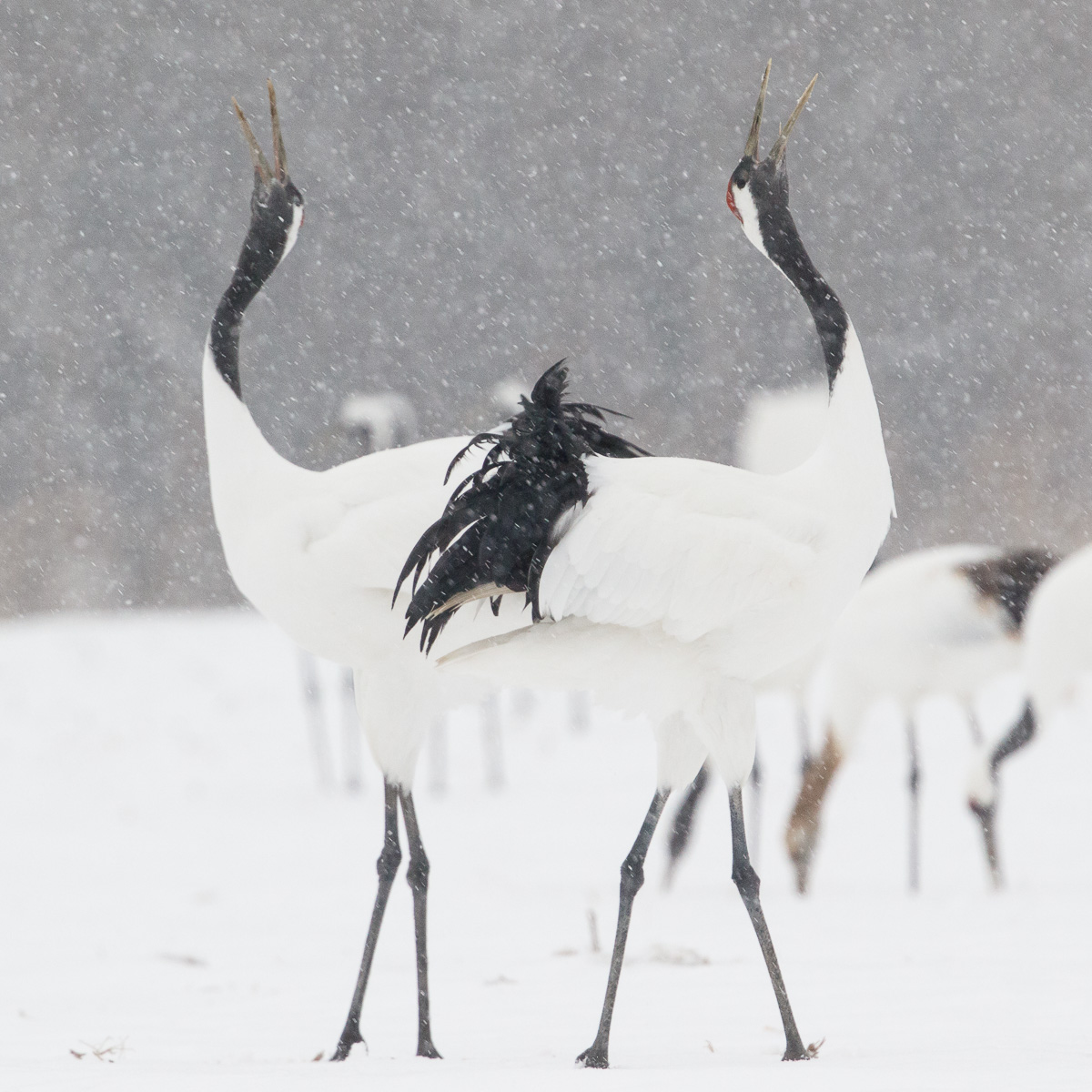
Coming apart. This was not the end of their courtship ritual, but the couple continued on. But it was hard to pick them apart in heavy snow and with the lack of contrast, so I lost track soon after.
As most of the tour group were not nature lovers, and coupled with the fact that it was cold and snowing heavily, we spent less than an hour at that place. I so dearly wished we had more time to see these enchanting cranes. Perhaps a return journey one day to see them, the Stellar Sea Eagles and Blakiston’s Fish Owls.
